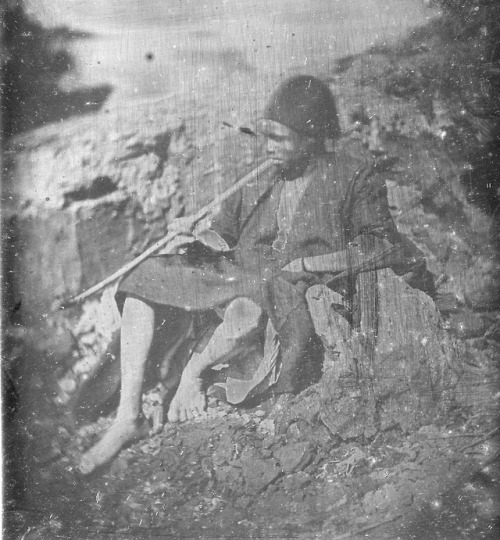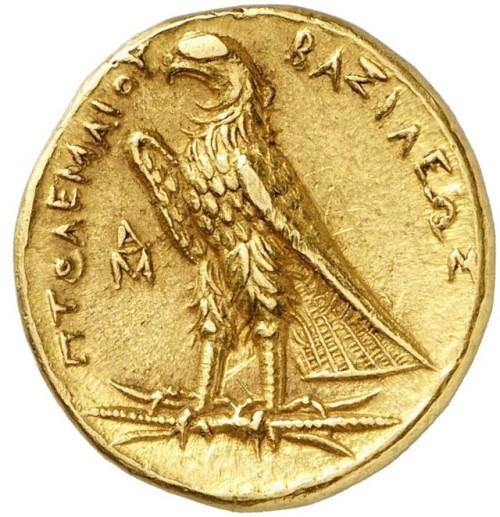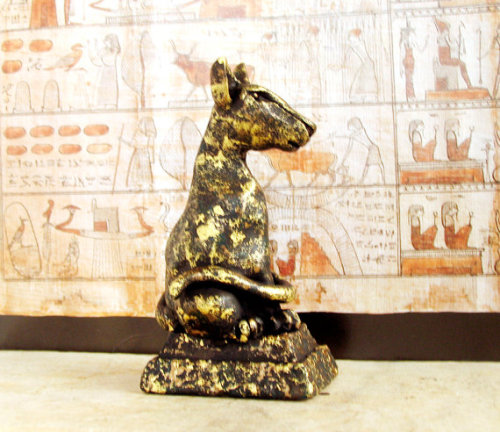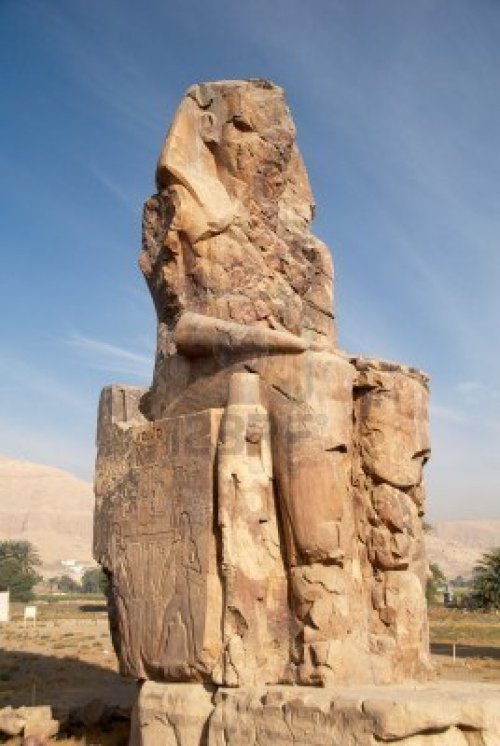#egyptian history
November 4, 1922 - Entrance to King Tut’s tomb discovered
“British archaeologist Howard Carter and his workmen discover a step leading to the tomb of King Tutankhamen in the Valley of the Kings in Egypt.
When Carter first arrived in Egypt in 1891, most of the ancient Egyptian tombs had been discovered, though the little-known King Tutankhamen, who had died when he was 18, was still unaccounted for. After World War I, Carter began an intensive search for “King Tut’s Tomb,” finally finding steps to the burial room hidden in the debris near the entrance of the nearby tomb of King Ramses VI in the Valley of the Kings. On November 26, 1922, Carter and fellow archaeologist Lord Carnarvon entered the interior chambers of the tomb, finding them miraculously intact.
Thus began a monumental excavation process in which Carter carefully explored the four-room tomb over several years, uncovering an incredible collection of several thousand objects. The most splendid architectural find was a stone sarcophagus containing three coffins nested within each other. Inside the final coffin, which was made out of solid gold, was the mummy of the boy-king Tutankhamen, preserved for more than 3,000 years. Most of these treasures are now housed in the Cairo Museum.”
This week in History:
November 1, 1512 - Sistine Chapel opens to public
November 2, 1947 Howard Hughes’s “Spruce Goose” flies
November 3, 1964 - D.C. residents cast first presidential votes
November 1842 - Abraham Lincoln marries Mary Todd
November 5, 1912 Woodrow Wilson wins landslide victory
November 6, 1860 Abraham Lincoln elected president
November 7, 1916 Jeannette Rankin becomes first U.S. congresswoman
ThisAnubis, found in Tutankhamun’s tomb, can be found in the online collection of the Metzger Collection.
Post link
Daguerreotype portrait of a sailor smoking a pipe in Cairo, Egypt, taken by French photographer Joseph-Philibert Girault de Prangey, c. 1843-1844.
Source: Bibliothèque nationale de France.
Post link
Portrait of two unidentified women in Egypt taken by German photographer Ernest Benecke, 1852.
Source: Metropolitan Museum of Art.
Post link
Daguerreotype portrait of a young Nubian man possibly selling food in Aswan, Egypt, 1844. By French photographer Joseph-Philibert Girault de Prangey.
Source: Gallica Digital Library.
Post link
Daguerreotype portrait of a group posing with a camel near Alexandria, Egypt, taken by French photographer Joseph Philibert Girault de Prangey, 1842. A windmill is visible in the far distance.
Source: Metropolitan Museum of Art.
Post link
Coin of Ptolemy II, Alexandria, Egypt, 280-279 BC
A gold pentadrachm with the diademed bust of Ptolemy II wearing an aegis is on the obverse - An eagle on a thunderbolt is on the reverse with a monogram in the field and ΠTOΛEMAIOY – ΒΑΣΙΛΕΩΣ written around. Sold at auction for around 11,421 USD.
Ptolemy II Philadelphus was the king of Ptolemaic Egypt from 283 to 246 BC. He was the son of the founder of the Ptolemaic kingdom, Ptolemy I Soter, a former Macedonian general to Alexander the Great. Ptolemy II extended his inherited power by skillful diplomacy and by developing agriculture and commerce. He made Alexandria a leading center of the arts and sciences. Read more about Ptolemy II here.
Post link
Antony and Cleopatra at the Battle of Actium by Johann Georg Platzer (c. 1730-1761) - English Heritage (Wellington Museum, Apsley House)
The Battle of Actium, 30 BC, marked the defeat of Mark Antony at the hands of Augustus and led to the suicide of Cleopatra. Mark Antony is shown in the central galley commanding his men, while Cleopatra is enthroned on a splendid ship on the right. Platzer used a very similar composition – a mêlée of ships of the ancient world as he saw it – for his depiction of The Rape of Helen. Born in St Paulin Eppan, in the Tyrol, Platzer was a pupil of his stepfather Josef Anton Kessler at Innsbruck and of his uncle Johann Christoph Platzer in Passau. From 1728, when he entered the Vienna Academy, he worked mainly in Vienna. He painted genre, historical and mythological subjects, with a high degree of finish, influenced by the Antwerp school of the seventeenth century, in particular the Francken family and Jan Brueghel.
Post link
(Main image: Hypatia Teaching at Alexandria by Robert Terwick Brown)
Born between 350–370, Hypatia a HellenisticNeoplatonist philosopher, astronomer, and mathematician, who lived in Alexandria,Egypt, then part of the Eastern Roman Empire. Daughter of Theon of Alexandra (himself considered to by many to be the greatest mathetician of his generation), Hypatia would go on to succeed him as leading mathematician in Alexandria before becoming one of the highest regarded mathematicians in the Eastern Roman Empire.
Her philosophy of Neoplatoism led her to to choose a life dedicated to the service of knowledge and learning, with mathematics in particular being key to a life of highter contemplation.
Her intelligence and wisdom made her extremely highly regarded in her time, with her even coming to have influence in political circles, particularly with Orestes, the Roman prefect of Alexandria. This, unfortunately, ended up contributing to her death as it drew her into the violent feud that was brewing between Orestes and the archbishop of Alexandria, Cyril.
Despite Hypatia reportedly being willing to teach anyone who was willing to learn in the Neoplatonic school in Alexandria where she taught philosophy and astronomy, regardless of whether they were a pagan like herself or any of the myriad religions that existed in Egypt at the time, the fact that she was not just a pagan, but a pagan with both heretical views AND supposed influence on a key political figure led some Christians to accuse her of either causing or prolonging the feud between Orestes and Cyril.
So,in 415, a Christian mob, led by a lecter called Peter, murdered her in the street, in a crime of such violence that it caused shockwaves across the Empire. At the time philosophers were seen as being politically untouchable, and the fact that a mob was able to kill one in the street, and a woman at that, was seen as “profoundly dangerous and destablising“.
Now while an investigation into the death of Hypatia found that Cyril probably didn’t order her assassination, per se, it is accepted by some historians such as Edward J. Watts, that Cyril’s smear campaign against her did contribute towards a Certain Folk feeling that she was an acceptable target for violence.
Now, with that in mind, here’s where it gets… more gross.
Due to Hypatia reportedly being a lifelong virgin (there are multiple historical accounts of her firmly putting down advances by men attempting to get with her, which has led to some modern historians speculating that she was somewhere on the LGBTQ spectrum, but we lack the information to say one way or the other) and due to her death mirroring that of several Christian martyrs, many people think that she was used as the basis for the story of Saint Catherine of Alexandria.

Saint Catherine, who reportedly lived a 100 years after Hypatia, was the daughter of a noble and a scholar, who had all of Hypatia’s good qualities (smart, charismatic, kind etc) but had converted to Christianity at the age fo 14, and was subsequently martyred at 18 after a mob of pagans killed her in the street.
Now, unlike Hypatia there is no historical basis for a 4th century saint called Catherine who lived and died in the matter described, with the first mentions of her even existing until the 9th and 10th centuries, leading some to speculate that she’s a metaphor or an allegory…
Or a bunch of medieval monks took the story of Hypatia, a good woman who died as a result of Christian religious violence, and rebranded her with a different name, turned Hypatia’s lectures on science and philosophy into Catherine converting pagans to Christianity, and inverted the identities of the victim and murderer to apply to their own agenda.
And the thing which makes it more nuts, is Saint Catherine was reportedly one of the figures that allegedly appeared before Joan of Arc that convinced her to go to the king of France to help him fight the English, which in turn led to Joan’s own execution and eventual sainthood.

Post link
Colossus of Memnon - ancient Egyptian monument. Tho huge sculptures near the ruins of pharaoh’s Amenhotep III temple. 3400 year BC. Egypt, Luxor.
Post link
Khnumhotep and Niankhkhnum. Illustration from photograph © 1999 Greg Reeder.
Khnumhotep and Niankhkhnum were ancient Egyptian royal servants and are believed by some to be the first recorded same-sex couple in history. The proposed homosexual nature of Khnumhotep and Niankhkhnum has been commented on the popular press, and the idea seems to (partially) stem from the depictions of the two men standing nose to nose and embracing. Niankhkhnum’s wife, depicted in a banquet scene, was almost completely erased in ancient times, and in other pictures Khnumhotep occupies the position usually designated for a wife. Their official titles were “Overseers of the Manicurists of the Palace of the King”
Post link


























